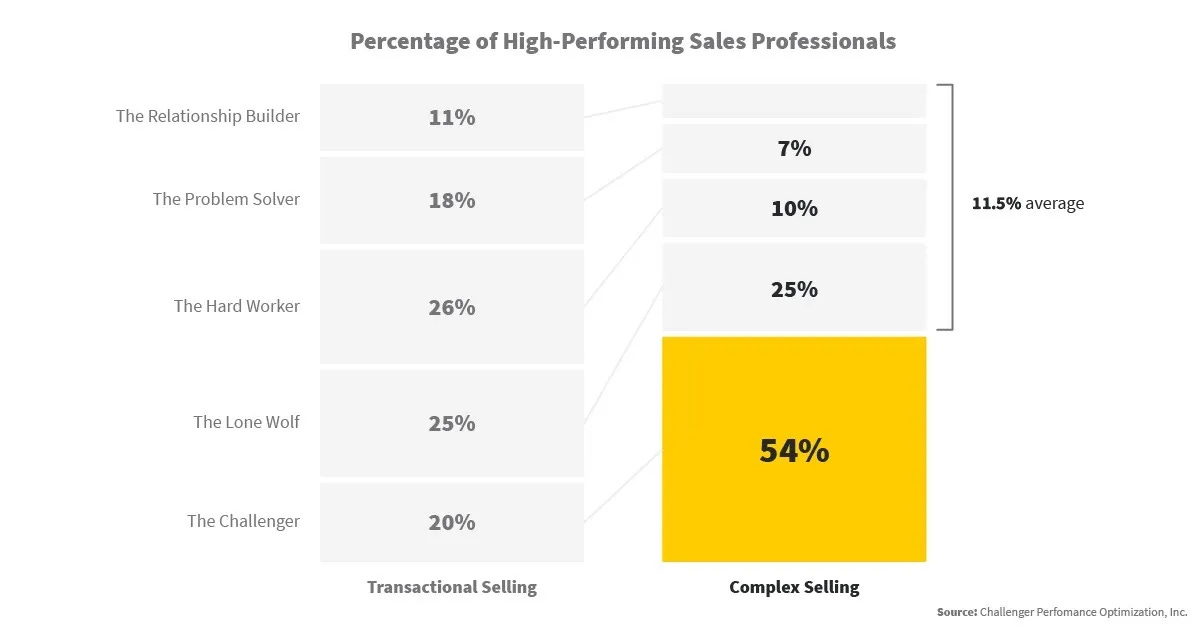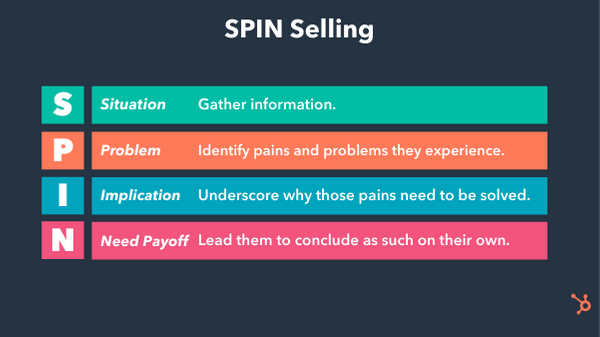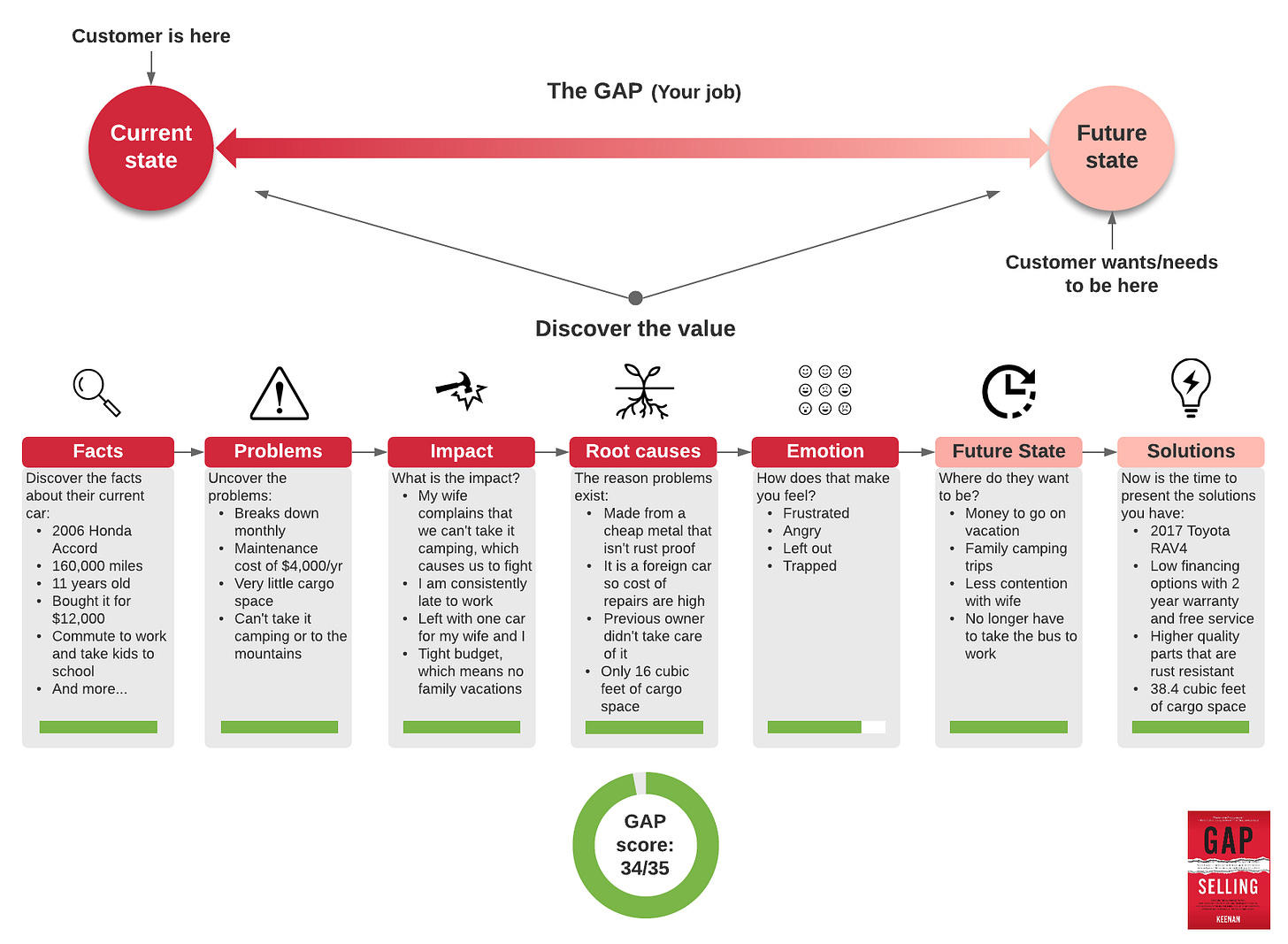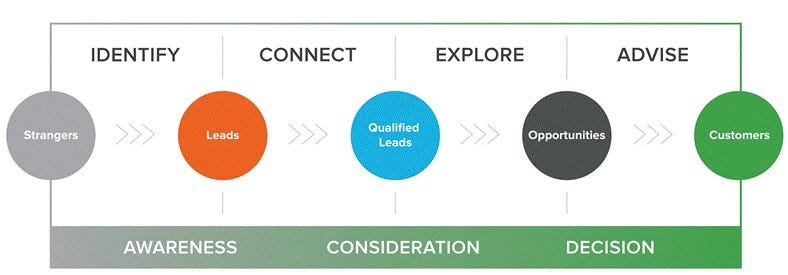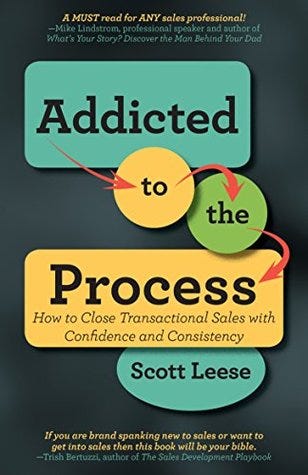Sales Process and Methodologies
Exploring qualification frameworks and structures of the sales process
Get your Gatorade ready.
I’m taking a slightly different approach to this week’s email - mostly because the topic at hand seems to call for it. So buckle up, pull up a chair or get your bookmark handy because this week’s edition is the longest newsletter I’ve done. Phheewww!
First…a story.
A few years back, one of the first things I did as a new VP of Sales was take a look at our current sales process and methodology to see where opportunities to improve may be. I learned a lot about the MANY different frameworks, methodologies, process that a sales org can implement and follow. The choices were seemingly ENDLESS.
With weeks and months of research, I came to the conclusion that crowning any particular method or process as the “Chosen One” - was just as polarizing as any political race or sports team fandom in today’s climate. Since we have enough debate on both those topics already, I’ll just present the case for each and let you decide what fits and where.
After all - the consensus I came to is there isn’t a one-size fits all approach. As you grow, you’ll likely have to adapt and even borrow pieces from the past to fit with what you want in the future.
And according to the experts below (and my experience too), the best approach is to customize your own framework to fit your specific size, ACV, sales cycle and internal process. So as you re-evaluate and implement a new approach -its nice to know where you fit in and what else is out there.
I’ve divided the newsletter into two distinct sections - Methodologies and Process.
Thanks for reading 👊 !
Methodologies
Starting with Methodologies seemed like a natural place to begin. Check out some of the top qualification frameworks and sales methodologies to see where you can implement or tweak within your sales org.
MEDDIC
First developed in the 1990s, MEDDIC (also known as MEDDICC & MEDDPICC) emphasizes better customer qualification and information. I’m seeing heavy use and implementation with Enterprise colleagues adopting this framework.
Advocates of the MEDDIC sales methodology argue that pitching to better-qualified customers results in a higher closing rate, thereby increasing sales success
Think of MEDDIC as a checklist for information you need to know, things you need to do, and people you need to be friends with. It also serves as a great troubleshooting tool to identify gaps or weaknesses in your current deals and in your process.
—-
BANT
IBM created the BANT criteria to find promising opportunities. This seems like the most outdated and archaic framework for those of us in SaaS. But if you have to start somewhere quick- I guess start here.
In order for a lead to be qualified, it must meet at least three of the four BANT criteria:
Budget - Is the product/service within the prospect’s budget?
Authority - Does the prospect have the authority to make the purchase decision, or will they be able to support the purchase on your behalf?
Needs - What does the business need?
Timeline - When will the prospect implement a solution?
—-
Challenger
The Challenger sales model and methodology is built around a sales process that focuses on teaching, tailoring and taking control of a sales experience.
In their book The Challenger Sale (Highly Recommend), Matthew Dixon and Brent Adamson introduced their belief that every sales rep falls into one of five categories:
The Hard Worker - Self-motivated, happily goes above-and-beyond, interested in feedback that helps them further develop their skills
The Lone Wolf - Independent, self-assured, trusts their own instincts
The Relationship Builder - Works very well with others, builds strong customer relationships, able to gain internal support from potential buyers
The Problem Solver - Very responsive, great at pinpointing problems, dedicated to finding solutions
The Challenger - Approaches the world with a unique point of view, enjoys debating and questioning the beliefs of others, has a thorough understanding of a customer’s business needs
The Challenger sales methodology aims to convert every sales rep into The Challenger.
—-
SPIN
Based on 12 years of research and 35,000 sales calls, SPIN selling is a sales strategy that comes from Neil Rackham's 1988 classic book, Spin Selling. In his book, Rackham argues that, in order to win larger consultative deals, salespeople must abandon traditional sales techniques in order to build value as a trusted advisor.
SPIN stands for the four stages of the questioning sequence:
S: Situation
P: Problem
I: Implication
N: Need Payoff
—-
GAP
GAP Selling is focused on bridging the gap between the buyers current state and their future state by customizing specific questions to identify: Facts, Problems, Impact, Root Causes, Emotion, Future State, Solutions.
By understanding the UNIQUE conditions of each of your prospects’ current environment and future goals, you will be able to develop specific, customized selling strategies for each of the prospects in your pipeline. Keenan - Creator of GAP Selling
—-
NEAT
Developed by the Harris Consulting Group and Sales Hacker Inc., this methodology was designed to turn BANT (budget, need, access/authority, timing) on its head.
Instead of qualifying customers based on the needs of the salesperson (qualifications for purchase), NEAT selling asks the salesperson to qualify how much they can help the prospect. NEAT Stands for:
Need
Economic Impact
Access to Authority
Timeline
—-
Process
Now let’s talk about Sales Process. A Sales Process to me is more about the behind the scenes work in between calls and meetings with buyers. Your internal process, rules of engagement, team structure and expectations for moving a deal through the funnel. Here’s the what, why and how to structure your own sales process.
Let Buyers Dictate Sales Process
Featured this earlier - but one of my favorite reads on sales process and frameworks. Mark Roberge details the top sales leadership lessons from his 10 years at Hubspot.
Mark says that today’s empowered buyers dictate the sales process, not salespeople. Develop the buyer journey first and then design a sales process that supports it.
—-
Addicted to the Process
Mostly catered to those in transactional sales (though the concepts apply for all), this book by Scott Leese is an excellent, quick read outling how we can follow a dedicated process.
I gleaned 9 steps: Talk to a Decision Maker, Find the pain, Build value, Create urgency, Talk about what you do, Discuss opportunities, Attempt to close, Deal w/ objections, Close or set a follow-up.
—-
How to Map Your Sales Process Steps
Pipedrive explains how to effectively map your sales process steps. By defining our process - mapping it out, and then identifying which methodology best suits our needs - we add value to support our process and stage.
A clear, repeatable sales process enables your reps to understand exactly what they need to do to succeed. It also helps you to plan out a well-defined sales cycles that can generate more revenue with less effort.
—-
STRETCH SNIPPETS
Lucid Chart outlines The What, Why, and How of Gap Selling
Aaron Ross says: "Specialize your roles! That's the single most important thing you can do to improve your sales and lead generation results"
Insightful guide from Morgan Mackles on a 10 -stage sales process for the Enterprise.
Podcast with Sam Jacobs and Keenan (Creator of GAP Selling) as they discuss how to move from feature selling to GAP selling
Andy Whyte says that unlike perhaps any other type of sales framework or sales methodology, MEDDICC has been attributed to more Unicorn technology companies than any other sales methodology.
John Barrows and Richard Harris ask Is BANT Dead? Are MEDDIC or N.E.A.T. selling working right now? This is a long-standing debate in sales and probably has you confused as to which approach you should be taking when it comes to qualifying your prospects.
If you can check off every letter in MEDDPICC, you will be far more likely to win your deal. And if you can’t, then you know what you need to work on. - Blakely Roth with Force Management
Gabe Villamizar talks MEDDIC and 3 Actionable Sales Tips That Will Help You Close Deals Faster
BANT and MEDDICC are not enemies of each other. They can and do cohabit together. Many hugely successful sales teams will use both in their sales processes with SDR’s using BANT to obtain an initial qualification on deals they create before passing the deal over to a seller to work through MEDDICC.
Pete Caputa - CEO of Databox says BANT isn't enough anymore and recommends the GPCT/CI framework to qualify prospects.
Chorus outlines their top 7 sales methodologies in SPIN, MEDDIC, Sandler, BANT, Winning By Design, AGILE.
Really great article from Sales Hacker on MEDDPICC. David Weiss outlines, that if done right, will help you identify gaps, weaknesses in your current deals and help you make more money.
Richard Harris warns leaders to not over engineer your sales process.
Sean O’Shaughnessey suggests updating the hunter-farmer sales model for today’s nuanced sales landscape by adding Gatherer and Trapper.
Jacco Van der kooij gives us The Sales Methodology Blueprint: How To Choose The Right One For Your Business.
Tom Williams gives us the Ultimate Guide to Mutual Action Plans (Transform Your Sales Process)
🧠 Mindset Matters
Things work out best for those who make the best of how things work out. --John Wooden
Thanks for reading!
My hope is if you find this valuable, consider sharing it with friends (or signing up if you haven’t already).
— Grant 👋
About stretch vp: confessions, learnings and insights from sales leaders in SaaS
Compiled and aggregated from a network of sales leaders in SaaS, Stretch VP showcases learnings, insights and experiences as well as best practices to overcome common hurdles, obstacles and setbacks in your quest for excellence as a sales leader in SaaS.
Are you a VP, Director, thought leader or content producer in the SaaS space? We’d love to have you contribute. Contact Me HERE.
Also… check out the blog or follow on twitter





